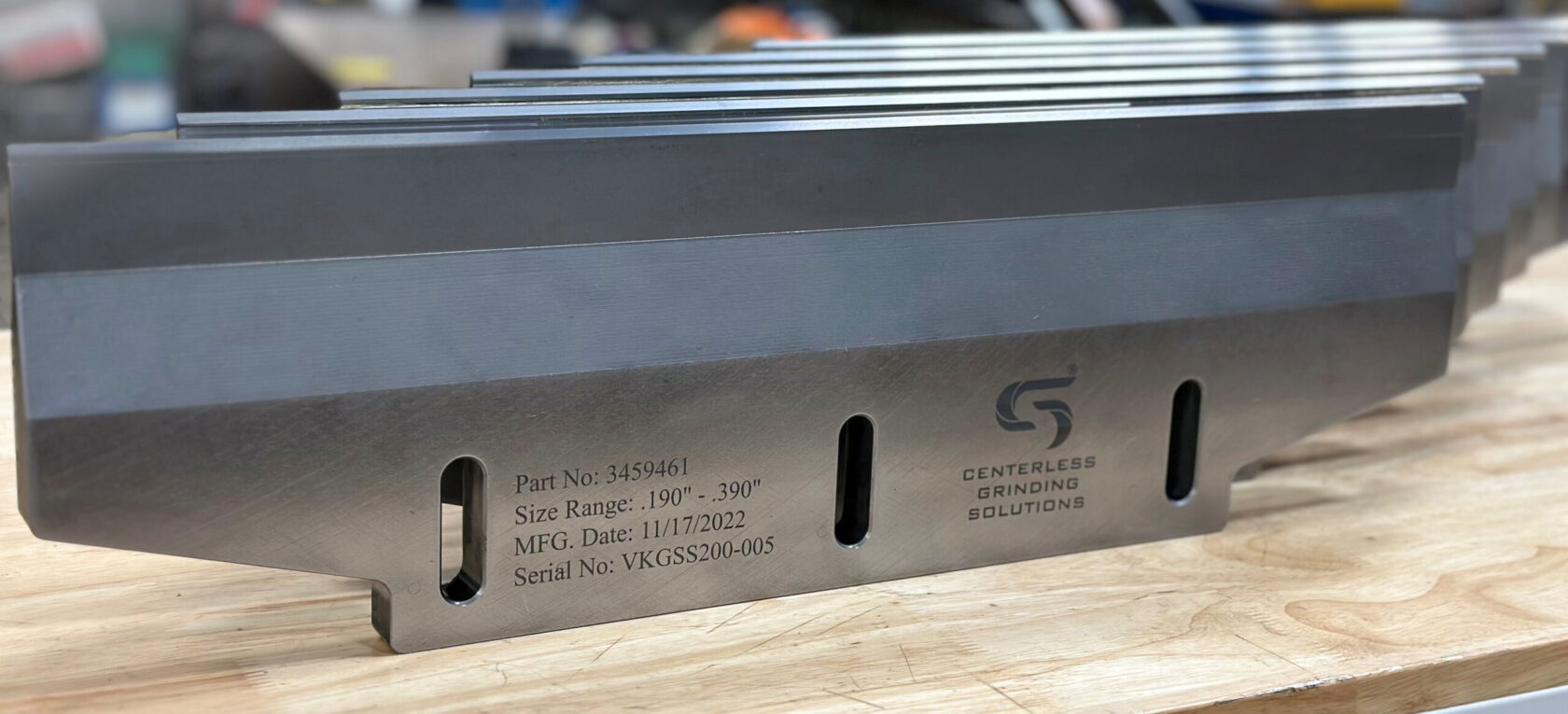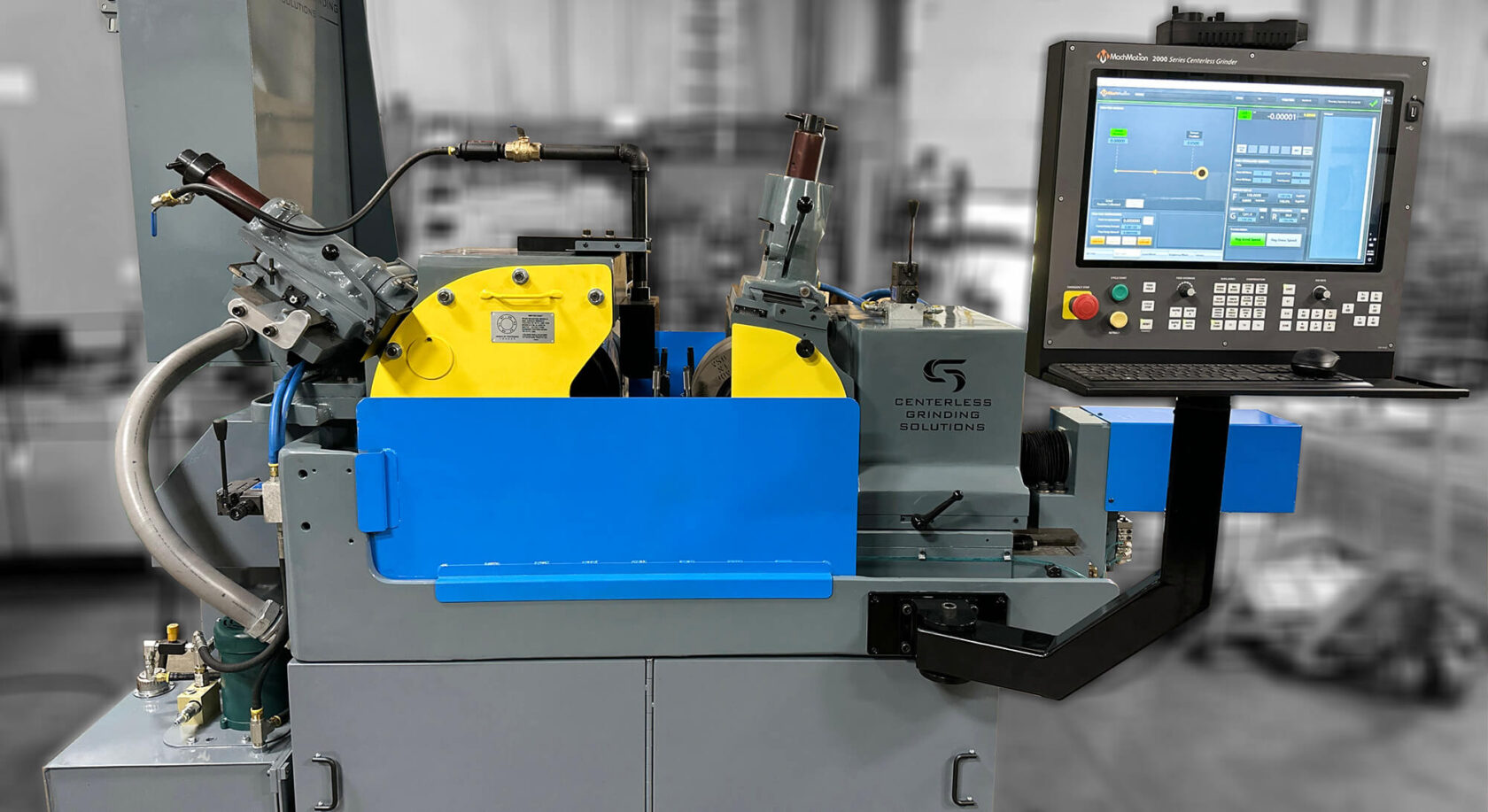
Centerless Grinding Troubleshooting: Expert Advice for Eliminating Taper Issues
Have you ever been puzzled by taper issues in your centerless grinding operations,
wondering where you might be going wrong? Taper problems can significantly hinder achieving the desired precision
and efficiency in manufacturing processes. In centerless grinding, where every micron counts, such issues can lead
to substantial setbacks, impacting product quality and production timelines.
This comprehensive guide delves into the heart of centerless grinding troubleshooting,
spotlighting, and eliminating those pesky taper issues. Our expert advice is tailored to help you diagnose, address,
and ultimately overcome these challenges, ensuring your grinding operations run as smoothly and efficiently as
possible. By the end of this post, you’ll be equipped with actionable strategies and insights to enhance the
precision of your grinding processes, safeguard the quality of your workpieces, and boost your operational
efficiency.
Common Centerless Grinding Challenges
Problem |
Potential Causes |
Suggested Solutions |
|
– Incorrect wheel alignment– Uneven wheel wear– Improper workpiece support |
– Realign grinding and regulating wheels– Dress or replace wheels as needed
– Adjust workrest blade for proper support |
|
– Vibration from machinery– Unbalanced grinding wheel– Inadequate coolant flow |
– Check and stabilize machinery– Balance and dress wheels– Increase coolant flow and check its distribution |
|
– Excessive grinding pressure– Too fast or slow wheel speed– Insufficient cooling |
– Adjust grinding pressure to optimal level– Fine-tune wheel speed for the workpiece material
– Ensure adequate and consistent coolant flow |
|
– Overheating due to high grinding speed– Insufficient coolant | – Reduce grinding speed-Increase coolant flow and check its effectiveness |
Centerless grinding, a pivotal process in precision manufacturing, is renowned for
producing smooth, cylindrical parts with tight tolerances. However, this process has challenges, particularly when
maintaining the finished products’ consistency and quality. Among the most prevalent issues encountered in
centerless grinding is taper problems, where the diameter of a cylindrical part isn’t consistent along its length,
leading to a conical or tapered appearance.
This problem can stem from various sources, including machine setup, wheel alignment,
and workpiece support. Understanding these challenges is the first step toward effective troubleshooting and
ensuring the smooth operation of centerless grinding processes.
- Machine Setup and Calibration: Proper setup of the centerless grinder is
crucial. Misalignments or incorrect calibrations can lead to uneven material removal, contributing to taper
issues. Ensuring that the grinding and regulating wheels are correctly aligned and that the machine settings
are optimized for the specific workpiece can help mitigate these problems. - Wheel Conditions: The condition of the grinding and regulating wheels
significantly impacts the outcome of the grinding process. Wheels that are worn, improperly dressed, or
misaligned can introduce irregularities in the workpiece, including taper. Regular inspection and
maintenance of these wheels are essential for maintaining grinding precision. - Workpiece Support: How a workpiece is supported during grinding also
plays a critical role. Inadequate support can lead to deflection or bending of the workpiece under the
grinding forces, resulting in taper. Ensuring robust and consistent support can help in producing uniformly
ground parts. - Material Removal Rate: The rate at which material is removed from the
workpiece can affect the uniformity of the grinding process. Aggressive material removal can lead to heat
buildup and deformation of the workpiece, while too slow a rate can lead to inefficiencies. Finding the
right balance is key to preventing taper issues.
Addressing these common challenges involves a thorough understanding of the centerless
grinding process, attention to detail in machine setup and maintenance, and a commitment to quality control
throughout the grinding operation. By identifying and rectifying the root causes of these issues, manufacturers can
enhance the efficiency and precision of their centerless grinding processes, leading to higher-quality products and
increased customer satisfaction.
Diagnosing the Problem
Regarding centerless grinding, accurately diagnosing the root cause of issues like
tapering is half the battle won. Tapering can manifest due to various factors, from incorrect machine setup to the
wear and tear of machine components. A meticulous examination can reveal much about the underlying issues.
Equipment Check
Start with a thorough inspection of the centerless grinder. Key areas to focus on
include:
- Grinding and Regulating Wheels: Check for alignment issues, as misaligned wheels are a common culprit behind taper
problems. Both wheels should be perfectly parallel and perpendicular to the grinding bed. - Wheel Condition: Assess the
condition of both wheels. A worn or improperly dressed grinding wheel can contribute to uneven material
removal, leading to tapering. - Workrest Blade: The blade that
supports the workpiece during grinding plays a crucial role. Ensure it is positioned correctly, with no
signs of wear that might compromise the stability of the workpiece.
Process Parameters
Beyond the physical setup, process parameters can also influence the outcome:
- Grinding Pressure: Excessive
pressure can cause deflection in the workpiece, especially long and slender, leading to taper issues. - Speed Settings: The relative
speeds of the grinding wheel and regulating wheels’ relative speeds need careful adjustment. Incorrect
speeds can lead to uneven material removal.
By systematically examining these factors, you can pinpoint the cause of tapering and
other issues, setting the stage for effective troubleshooting and resolution.
Addressing Precision Issues
Achieving precision in centerless grinding is a meticulous process that requires
attention to detail in every aspect of the operation. Once the potential causes of issues like tapering have been
diagnosed, the next step involves making precise adjustments to rectify these problems.
Machine Setup Adjustments
- Wheel Alignment: Realign the
grinding and regulating wheels to ensure they are perfectly parallel. This step is crucial, as even a minor
misalignment can lead to significant tapering issues. - Wheel Dressing: Regularly dress
the grinding wheel to maintain its shape and surface condition. This helps in achieving a consistent removal
rate across the workpiece. - Workrest Blade Positioning: Adjust the workrest blade to support the workpiece at the correct angle. This is
vital for maintaining stability and preventing deflection during the grinding process.
Fine-Tuning Process Parameters
- Adjusting Grinding Pressure: Reducing the grinding pressure can help minimize workpiece deflection, a common
tapering cause. The goal is to find a balance that allows for efficient material removal without
compromising the workpiece’s integrity. - Speed Optimization: Fine-tune
the speed of the grinding and regulating wheels. The right speed combination is key to achieving the desired
surface finish and dimensional accuracy.
By carefully adjusting these factors, you can significantly improve the precision of
your centerless grinding operations, effectively addressing issues such as tapering and ensuring the production of
high-quality, consistent parts.
Solving Taper Problems
Taper issues in centerless grinding can be particularly challenging due to their
potential to stem from various sources. However, with a systematic approach to troubleshooting, you can identify and
rectify the causes of taper, ensuring the production of uniformly precise parts.
Critical Adjustments for Taper Correction
- Wheel Alignment Reassessment:
Re-examine the alignment of the grinding and regulating wheels. Misalignment is a frequent cause of taper
problems, and even slight adjustments can significantly impact the outcome. - Regulating Wheel Angle:
Adjusting the angle of the regulating wheel can be an effective way to combat taper issues. A slight tilt
can compensate for unwanted tapering by ensuring more uniform material removal across the length of the
workpiece. - Workpiece Support Enhancement: Ensure the workpiece is adequately supported throughout its length. Improving
support can help prevent the workpiece from bending during grinding, a common cause of tapering.
Leveraging Advanced Techniques
- Using CNC Controls for Precision: Modern centerless grinders equipped with CNC controls allow for precise
adjustments to the machine settings. Utilizing these controls can help make minute adjustments often
required to eliminate taper issues. - Incorporating Real-Time Monitoring: Advanced monitoring systems can provide real-time feedback on the grinding
process, enabling immediate adjustments to correct any emerging taper problems.
By implementing these targeted strategies, you can effectively address and eliminate
taper issues in your centerless grinding operations, improving accuracy and consistency in your manufacturing
processes.
Preventative Maintenance
A robust preventative maintenance program is essential for minimizing issues in
centerless grinding operations, including taper problems. Regular maintenance not only helps in preventing the
occurrence of issues but also extends the lifespan of the grinding machines.
Routine Inspections
- Daily Checks: Establish a
routine for daily inspections of the grinding machine’s critical components. This includes checking for
signs of wear on the grinding and regulating wheels, ensuring the workrest blade is in good condition, and
verifying the alignment of all components. - Lubrication: Regular lubrication
of moving parts prevents excessive wear and tear and ensures smooth operation. Follow the manufacturer’s
guidelines for the type and frequency of lubrication.
Scheduled Maintenance
- Professional Servicing: Schedule
periodic professional servicing to ensure that the centerless grinder functions optimally. This may include
more in-depth checks and replacements of inaccessible parts or require specialized assessment
knowledge. - Component Replacement: Replace
components such as bearings, bushings, and wheels per the recommended service intervals or sooner if wear is
evident. Using high-quality replacement parts can significantly reduce the likelihood of issues.
Training and Documentation
- Operator Training: Ensure that
all operators are well-trained in the grinding machines’ operation and the basics of preventative
maintenance. Knowledgeable operators can detect minor issues before they escalate into significant
problems. - Maintenance Records: Keep
detailed records of all maintenance activities. This documentation can help identify recurring issues,
schedule future maintenance, and ensure compliance with relevant industry standards or regulations.
A proactive approach to maintenance, combined with regular training and accurate
record-keeping, can significantly reduce downtime and ensure that centerless grinding operations run smoothly and
efficiently.
Leveraging Technology for Enhanced Troubleshooting
Adopting advanced technologies in centerless grinding has significantly streamlined
troubleshooting and maintenance. These innovations offer precise, real-time monitoring and diagnostics, improving
efficiency and accuracy.
Real-Time Monitoring and Predictive Maintenance
- Sensors and Analytics: Equip
grinders with sensors to monitor key operational parameters, providing instant feedback to detect
anomalies. - Predictive Insights: Data
analytics can forecast component wear, allowing for preemptive maintenance and reducing downtime.
CNC and Automation
- Precision and Consistency: CNC
systems automate adjustments, ensuring high precision and consistent grinding conditions across jobs. - Ease of Use: Programmable
settings simplify repeat job setups, maintaining optimal grinding conditions effortlessly.
Diagnostic Tools
- Software Diagnostics: Specialized software analyzes machine data to identify issues swiftly, simulating
adjustments to predict outcomes. - Remote Support: Advanced systems
enable remote diagnostics, allowing experts to address issues without being on-site, saving time and
resources.
Integrating these technologies into grinding operations simplifies troubleshooting and
enhances overall operational reliability and quality.
Conclusion
Tackling taper issues and other common challenges in centerless grinding demands a
comprehensive approach, combining precise adjustments, preventative maintenance, and the latest technology. By
diagnosing problems accurately, making informed adjustments, and embracing technological advancements, manufacturers
can significantly enhance the precision, efficiency, and reliability of their grinding operations.
Preventative maintenance is key to avoiding unexpected downtime, while technology like
real-time monitoring, CNC controls, and advanced diagnostics plays a crucial role in streamlining troubleshooting
processes. Adopting these strategies ensures the high quality of finished products and the long-term sustainability
of grinding operations.
Are you facing challenges with your centerless grinding operations? Don’t let taper
issues or other grinding problems slow you down. Our team of experts at Centerless Grinding Solutions is here to
help you diagnose and solve your grinding challenges, ensuring your operations run smoothly and efficiently.
Contact us today for a consultation or to learn more about how we can assist you in
enhancing your centerless grinding processes. Let’s work together to achieve precision, efficiency, and excellence
in manufacturing operations.

